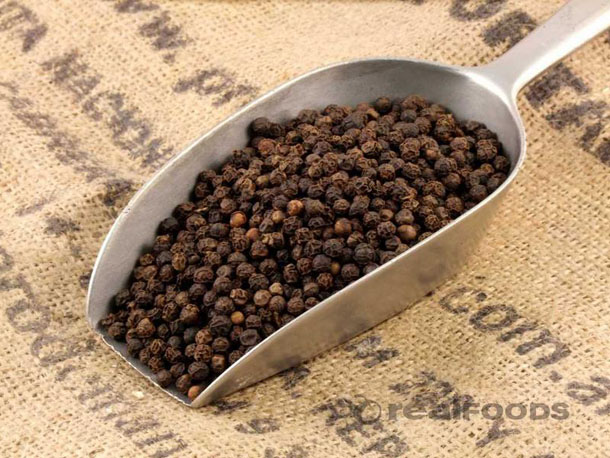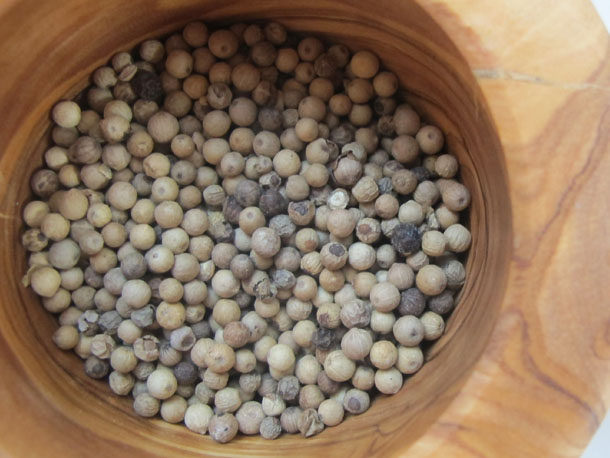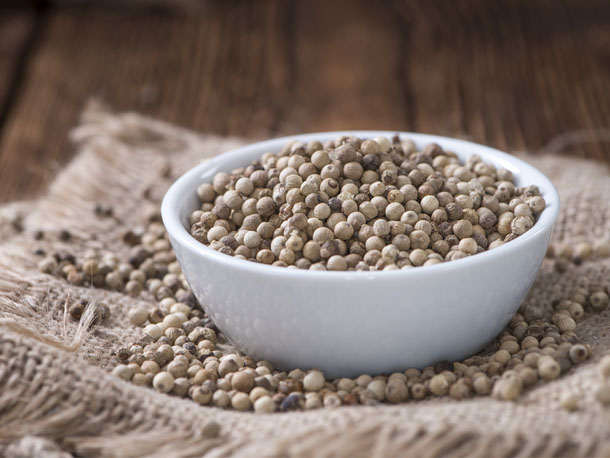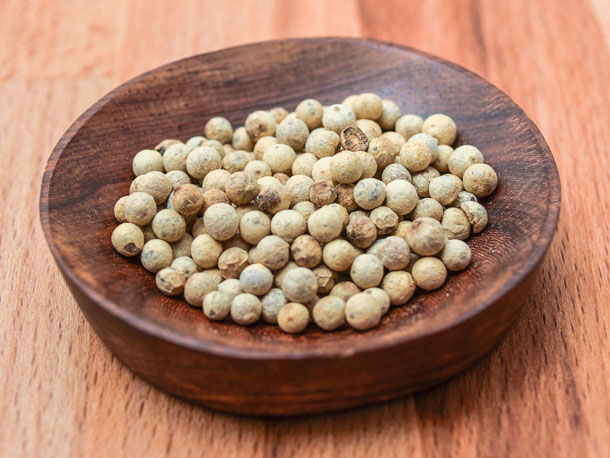Pepper shows tentative start

The global pepper market has been slow activities since the holiday mood occurred in the last few weeks, the International Pepper Community (IPC) observed in its Weekly Prices Bulletin for the period to January 6 2018.
“Entering 2018 the market remained calm with limited activities,” it noted.
The IPC finds that local prices of pepper in India, Indonesia and Malaysia were relatively stable, while in Vietnam and Sri Lanka prices increased marginally. With the exception of Vietnam, fob prices at origins were reported to be stable.
“It is expected that price in 2018 will remain high,” the IPC added. However, in the short term the market will be dependent on the developments in India and Vietnam, with harvesting in these two main sources about to begin, the organisation cautioned.
Prices in these to two origins had increased almost daily during the week. However, in average terms the price in India was relatively stable, the IPC feels. In Sri Lanka a price increase was recorded.
The IPC explained that world pepper prices experienced a declining trend in 2016 after recording a peak in 2015. “Pepper prices recorded the highest at the level of USD11.33 per kilo for black and USD 16.50 per kg for white pepper in New York in July 2015. The price then decreased to USD7.98 and USD11.69 per kg respectively for black and white pepper in December 2016,” the report recalled.
The IPC remarked that although the world pepper price is still good enough it has decreased by 29% from its highest point in 2015.
November review
Earlier this week, the IPC released its Market Review of November 2016, which examined the trends in the market to that point.
In this report, it noted that in the previous few months’ pepper prices showed a continuous declining trend, particularly in Indonesia, Vietnam and Malaysia, until the middle of November and then from the third week of that month onwards prices in every producing country started slowly moving upwards.
In November 2016 the IPC pepper price index decreased 5.27 points for black and 2.40 points for white pepper (see Table 1 below). The price index has slid below 100 which is the base price (average composite price of the last five years).
The organisation explained that decreased prices at major exporting countries such as Vietnam and Indonesia contributed to the lower price index.
The composite price of pepper decreased by 5.23% and 2.40% to USD7,110 and USD10,126/tonne for black and white pepper respectively, for the month of November 2016 (Table 2).
Note: Composite prices are derived from calculation of monthly export and fob price of the top five pepper exporting countries (Vietnam, Brazil, India, Indonesia and Malaysia)
November 2016 showed reduced demand with prices in many producing countries holding lower levels. “Under this prevailing situation, producers generally hold back limited stock, expecting to have better price in future. Prevailing pepper prices in many of the producing countries has decreased quite significantly in the local markets,” the report stated.
The IPC finds that in India the decrease had been marginal while in Sri Lanka price was quite stable, as it is more influenced by price in India because of efficient bilateral trade, while in Malaysia, Indonesia and Vietnam the price decrease had been considerable. Price in China has also decreased by 2% in the local market.
The report noted that the current declining trend was mainly influenced by the situation of excessive pepper supply from Vietnam into the international market, exceeding the projected volume.
Vietnam will need an excellent 2018 crop in order to surpass its estimated export target as supplies from other producing countries were minimal. It is presumed that more than 170,000 tonnes of pepper production has resulted from the 2016 Vietnam harvest. “It is well noted that production capacity of pepper is increased from year to year as a result of area expansion programme taken place in the last few years as a response toward the continuing price increase in the last 10 years,” the IPC explained.
On the local market in Vietnam in November 2016, the black pepper price decreased by 7% and the fob price decreased by around 5%, while the white pepper price declined 4% from the previous month. However, by the close of November, prices in Vietnam showed an upward trend.
In Indonesia, the local price of black pepper dipped 9% in Lampung mainly as a result of declining prices in Vietnam as the largest pepper exporter. Moreover, Indonesia also supplies pepper to Vietnam for re-exports. Weakening of local currency contributed to the decrease in Lampung.
In Bangka, a marginal decrease of 1% has recorded.
In India the price has decreased marginally, but in Sri Lanka price was quite stable. The approach of harvesting season in India was likely to be the main reason for the price decrease in India, according to the IPC.
Most of the pepper harvested in India is absorbed in the local market. This also applies to Sri Lanka, with its comparatively lower production, some of which is also exported to India.
In Malaysia, Sarawak pepper prices decreased significantly during November 2016, being seen as the lowest local prices among all the producing origins.
“The local price reported in Sarawak was the price offered by local traders to farmers for unprocessed pepper. Lots of treatment has to be made to meet export quality. In addition, the current situation of huge supply of pepper production in Vietnam has a significant implication on the local market price. Weakening of the Malaysian ringgit against the US dollar is also contributing to the lower price,” the IPC explained.
In view of the current scenario of changing weather conditions in the producing countries, such as heavy rains occurring every day in Indonesia and unfavourable weather in some other origins the IPC said it might have to wait for information on the new crops in India and Vietnam before it is able to draw any firm conclusions on the prospects for the global market in 2018.
Longer term trends
The IPC observed that the world pepper price in the last 10 years has shown an increasing trend.
“In general price moves in a similar pattern from time to time. When the price tends to go up, almost all prices in domestic as well as international market will move upward, and vice versa, although not always move proportionally. Deviations from the general pattern may occur in certain years in view of prevailing country specific condition which would have taken place,” the report suggested.
The organisation feels that there were two different price patterns in producing countries over the last decade. Price changes in India and Sri Lanka move in a particular pattern when compared with the different price movement in Vietnam, and Indonesia and Sarawak move in a similar pattern.
Price movement in Lampung, Indonesia, is influenced by price developments in Vietnam, the largest pepper supplier. Sarawak pepper prices have also been influenced, but at a lower intensity. Price in Sri Lanka is mostly determined by price movements in India, since the major portion of Sri Lankan pepper gets exported to India for value addition purposes.
The IPC observed that in 2013, 2015 and 2016, price changes in India and Sri Lanka took a particular direction when compared with the price pattern shown in other origins.
In 2013 pepper prices in Indonesia and Vietnam increased, but in India and Sri Lanka they decreased due to significant increases in production. In Sarawak, the price was relatively stable during the year.
Deviation had also taken place in 2015, where prices in almost all producing countries increased, but those in India again decreased. This was due to the significant increase in the country’s production, which reached and estimated 64,500 tonnes compared with 37,000 tonnes in 2014.
Up to October 2016, prices in Lampung (Indonesia), Vietnam and Sarawak showed a significant decrease, while in India and Sri Lanka they continued to increase, the IPC finds.
In November 2016, the price trend changed again. Pepper prices in Vietnam and Indonesia increased on limited supply in these origins, but in India and Sri Lanka they decreased.
“In 2018 the market will mainly depend on the crop situation in India and Vietnam. Observing current weather condition reported in Vietnam, Indonesia and India, it is predicted that production of pepper in 2018 in these countries would be not as good as projected earlier and price stabilisation is expected to happen in 2018,” the IPC concluded.





